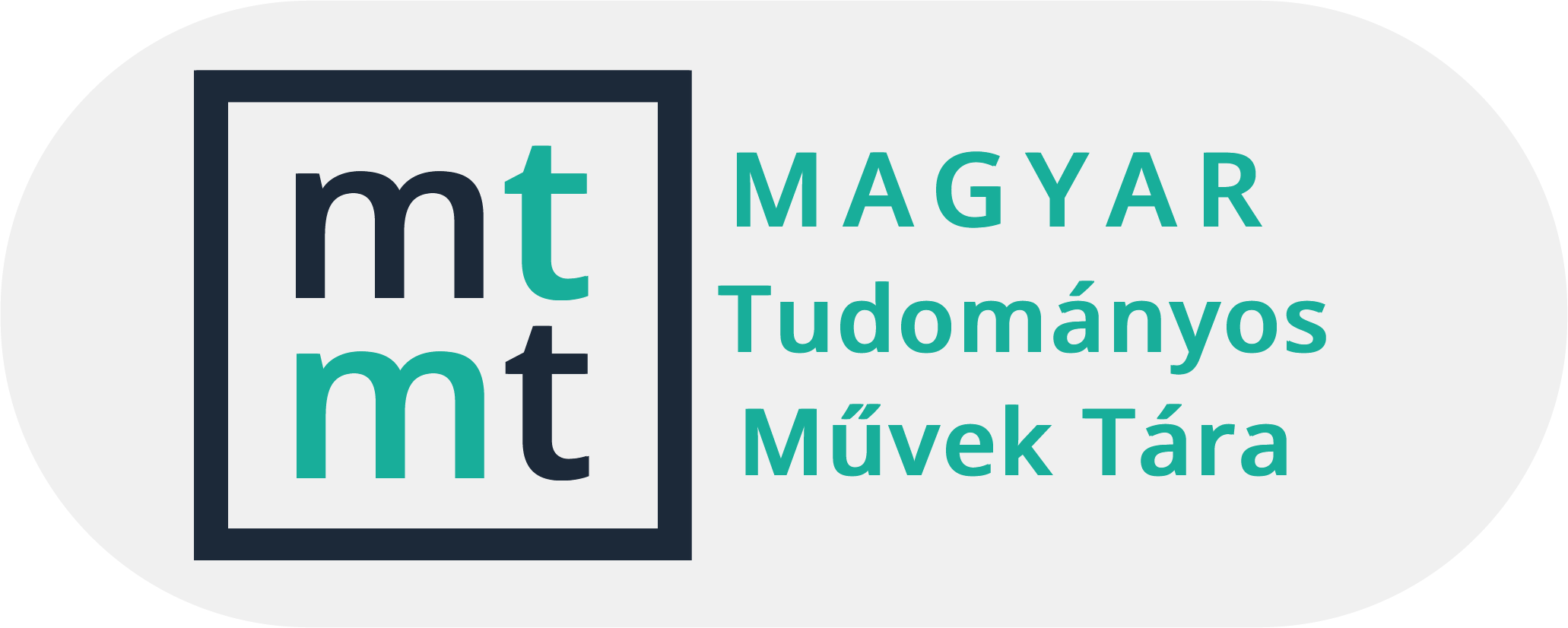Search
Search Results
-
The "DARKEST FIELD’ OF MEDICINE: PSYCHOLOGICAL KNOWLEDGE IN THE CURRICULA OF THE UNIVERSITIES OF THE HABSBURG MONARCHY (1786–1830)
78-103Views:231In the second half of the 18th century, there appeared a growing interest in Hungarian scientific discourse pertaining to the ‘sciences of man’, and especially psychology. Issues such as the place and function of the soul, its impact on the human body and the nature of mental disorders surfaced in the medical, philosophical and anthropological treatises of the age, whereas the treatment of the mentally ill posed new challenges and demanded answers hitherto unaddressed by medical authorities. However, in medical education, individual courses on psychiatry appeared relatively late, owing to the lack of an institutional background that would have provided the necessary amount of empirical cases and a training ground for physicians. In the Habsburg Monarchy, the first plans to the teaching of psychiatry were proposed only in the 1840s by the leading physicians of the principal asylums established in Vienna (1784) and Prague (1790). Nevertheless, psychological knowledge surfaced in medical education, taught as part of courses on physiology, pathology, medical police, and forensic medicine. As for psychological knowledge, these courses offered the basic outlines of the cognitive faculties, the concepts of feeling and volition, as well as the most common disorders of the soul. The article compares the curricula and textbooks of the three leading medical faculties of the Habsburg Monarchy, the universities of Vienna, Pest, and Prague. The main argument is that even though practical courses were introduced well into the nineteenth century, psychology – as a principally theory-based discipline – was already considered an important ‘auxiliary science’ in medical education.
-
The ESTABLISHMENT OF THE FACULTY OF ECONOMICS AND UNIVERSITY POLITICS BETWEEN THE TWO WORD WARS
104-122Views:160Although economics education has a history going back to the reign of Maria Theresia and despite the fact that its position has significantly strengthtened by the 20st centruty, the future of the subject has been a bone of contention ever since the 19th century. The majority supported the establishment of an independent University of Economics, however this was only partially materialized in 1920 with foundation of the partiallly independent Faculty of Economics. The faculty struggled with financial and placement-related issues, and the establishment became part of the József Nádor Technical and Economics University in 1934. This redesign involving a number of academic institutions (Technical University; Faculty of Economics; College of Veterinary; and College of Mining and Forestry) seemed to be succesful. Although the global economic recession resulted in the decrease of the number of students studying economics in the 1930s, from the 1940s on student enrollment figures started to sharply increase owing to the economic recovery following the world wars. The Hungarian University of Economics was only opened in 1948, but the nature of the institution changed following the communist takeover, not in line with its original purpose.
-
Ramism in the KIngdom of Hungary and in Transylvania
Views:234Ramism in the Kingdom of Hungary and in Transylvania. The study reviews the impacts of Ramism on the scholarly, pedagogical, and cultural life of the Kingdom of Hungary and of Transylvania, including the local publications in grammar, rhetoric, homiletics, and logic, and the presence of Ramist considerations and components in domestic education. Judging by the evidence of its reception in Hungary and Transylvania, we can conclude that Ramist influence was present in the main Calvinist institutions, that is, in the colleges at Gyulafehérvár, Kolozsvár, Sárospatak, Várad, and Debrecen during the mid- and late seventeenth century. Such influence affected the whole system of classification of the academic sciences, and elements of Ramism remained detectable until the mid-eighteenth century. More sporadic, but not insignificant, was Ramist influence usually taking a more syncretic form at Lutheran institutions that adhered to essentially Melanchthonian pedagogy.
Literary works by Hungarian authors with Ramist and, often, Puritan convictions are clearly understandable texts characterized by their conceptual plainness and clarity, which include only a few elements of belletrism, affective attraction, and literary originality in their predominantly rational argumentation. That such texts strive primarily for intellectual rationality is clearly connected with the authors’ Ramist mindsets, because, under a strictly Ramist theoretical framework, only a small number of the taxonomic processes which distinguish literary works from the natural order of precise, objective, rational discourse could be accepted.
-
The DEVELOPMENT OF SCIENCE AT THE UNIVERSITY OF OLOMOUC IN THE 17TH-18TH CENTURIES
111-130Views:77The Jesuits founded a grammar school in Olomouc in 1566, adding a philosophy faculty in 1576 and a theology faculty in 1582. The document describing the Jesuit educational system, Ratio et institutio studiorum, divided education into three stages, the highest of which was called studia superiora, and included philosophy and theology. From the second year onwards, students studied mathematics, astronomy and geography, and in the third year, from 1637 onwards, ethics. The Jesuits did not pay much attention to the teaching of the natural sciences, as these subjects undermined the authority of the Church and contradicted fundamental Church dogma. As a result, in the second half of the 17th century and the early 18th century, only very sporadic research and education in the sciences developed. Nevertheless, the University of Olomouc did have professors engaged in mathematical, physical and astronomical research, including a number of foreign-born scientists. In scholastic disputations, topics approved by the ecclesiastical authorities, mostly controversial, were discussed. Nonetheless, we do find here scientific topics in philosophy, biology, chemistry, physics and mathematics, although not in as large a number as would have been desirable.
-
Finding Experiments of New twechnical Universities in the First Deacade of the 20th Century- The Almost -Opened Technical University of Timisoara
90-101Views:225The Founding Experiments of New Technical Universities in the first Decade of the 20th Century. The almost-opened Technical University in Timisoara. Due to the need for industrial development in
the era of dualism and the overcrowding of the Royal Joseph Technical University, the founding of the second Hungarian technical university became one of the most pressing problems of higher education at the turn of
the 20th century. The professional public, the Royal Joseph Technical University and the government both imagined the establishment of the institution in Timisoara which was the industrial-commercial center of
Southern Land. They took into consideration economic, educational and national aspects as well. The concrete plans were completed by 1917, but due to historical events, the institution was founded only
in the autumn of 1920 as a Romanian Politechnic. In addition to Timisoara, Košice was the planned seat of the third Hungarian technical university, but the preparations were not as far away as in Timisoara. -
Ethnography and Folklore Studies at the Hungarian Universities until 1960
Views:203Ethnography and Folklore Studies at the Hungarian Universities until 1960. At the University of Budapest at the end of the 18th century it was Dániel Cornides (1732–1787) who dealt with issues of Hungarian ancient religion, while András Dugonics (1740–1818) paid attention to various aspects of Hungarian folk poetry (tales, idiomatic phrases, proverbs) and folk customs in his lectures. Descriptive statistics, reports of the state of affairs in various regions and ethnic groups within the country documented the ethnographic character of these areas and groups in the first half of the 19th century. In the second half of the century professors of Hungarian literature and language investigated and discussed these topics with a comparative European perspective at universities. Ethnographic and folklore-related knowledge was disseminated by excellent professors of classical philology and oriental studies. Professors of geography (János Hunfalvy, Lajos Lóczy) played a crucial role in providing information about faraway peoples and continents at the University of Budapest.
The first associate professor (Privatdozent) in ethnography was Antal Herrmann at the University of Kolozsvár (Cluj-Napoca, now Romania) in 1898. He delivered his lectures until 1918 in Kolozsvár, and between 1921 and 1926 in Szeged where the University of Cluj was relocated to. The first university department for ethnographic and folklore studies was established at the University of Szeged, where Sándor Solymossy, a scholar of comparative folkloristics, became professor. At the University of Budapest the first department for ethnography and folklore studies was founded for professor István Györffy, who primarily studied material culture and the people of the Great Hungarian Plain. His successors were Károly Viski (1942), then folklorist Gyula Ortutay (1946). In 1951 at the University of Budapest another department came into being for István Tálasi who was a scholar of material culture studies and historical ethnography.
The head of the ethnography and folklore department of the Hungarian University of Kolozsvár (Klausenburg, Cluj) was Károly Viski in 1940–1941, and Béla Gunda between 1943 and 1948. At the University of Debrecen established in 1912 a number of associate professors held ethnographic and folklore lectures between 1925 and 1949 (István Ecsedi, Károly Bartha N., Tibor Mendöl, Gábor Lükő), but an autonomous department was established only in 1949, led by Béla Gunda until 1979. At the University of Szeged Sándor Bálint was appointed professor of ethnography and folklore studies in 1949, but only after 1990 became it possible to provide M. A. degrees in ethnography and folkloristics. M.A. degrees in ethnography and folkloristics have been provided at the University of Budapest since 1950, while at the University of Debrecen since 1959.
-
Doctoral Dissertations on The Mathematical Seminar of the University of Debrecen at the Beginning of the 20th Century (1927–1940). Part. 2.
162-193Views:160In this article we present 16 mathematical dissertations, the life and later carrier of their authors (15 persons) in two parts. These dissertations were written under the direction of Professor Lajos Dávid between 1927 and 1940. At that time he was the leader of the Mathematical Seminar of the University of Debrecen. The themes of the dissertations were connected with his scientific work, such as history of mathematics (the two Bolyais), or research work in mathematical analysis (arithmetic-geometric mean). The dissertations were published separately as books. Later these were collected in a colligation named Dissertationes Davidianae Debrecen 1927–1940. We have to mention this colligation does not contain the dissertation of Ferenc Kárteszi. We found his work among the dissertations of Doctors of Philosophy in the Library of the University of Debrecen. (Part 2: 1934–1940).
-
A Debreceni Református Kollégium 17. századi professzorainak neolatin halotti költeményei
Views:280A korabeli alkalmi költemények (például az üdvözlő versek, esküvői és halotti költemények) kiváló betekintést engednek Debrecen 17. századi protestáns szellemi műveltségébe és a korabeli értelmiség közötti kapcsolatokba: A 17. század utolsó évtizedeiben különösen utóbb említettek váltak népszerűvé Debrecenben, hiszen hét halotti költemény-gyűjtemény is megjelent 1679–1700 között 1. Sympathia Memoriae (1679,
Köleséri Mihály halála alkalmából), 2. Lamentum Metricum (1681, Mártonfalvi Tóth György halálakor),
3. Parentatio lugubris (1681, Nógrádi Mátyás elhunyta okán), 4. Brabaeum vitae (1683, Köleséri Sámuel temetésére), 5. Hedera Poëtica (1686, Felvinczi Sándor elhunyta után), 6. Epicedium perennitati (Szenczi
A. Pál halála alkalmából), 7. Honor Posthumus (1700, Szilágyi Tönkő Márton elhunyta alkalmából).
Tanulmányunk két kiválasztott kötet (Parentatio lugubris, Honor Posthumus) vázlatos áttekintésével és a kollégiumi professzorok halotti költeményeinek részletes filológiai elemzésével igyekszik képet adni a 17. századi Debrecen értelmiségének nyelvi műveltségéről, költői teljesítményeiről és kapcsolatrendszeréről. -
THE ORGANISATION OF A TWO-YEAR ARCHIVES TRAINING COURSE BETWEEN 1958 AND 1960
122-133Views:98Due to increased archival and records management tasks, there was an urgent need for higher education in archival education in the second half of the 20th century. After the first initiative, after the end of university archival training between 1950 and 1955, a two-year course organized by the Ministry of Cultural Affairs only partially filled the gap, and due to its lack of elaboration and accountability, it can only be considered a partial success. Its value can be seen in the fact that it tried to pass on targeted knowledge to participants who had already worked in an archive, so the training was not considered an “elite” course of history. Correction of the errors in the course was delayed due to the reopening of the jigher education of archivist.
-
From a Protestant Law Student a Catholic Professor of Law in Linz (Johann Ferdinand Behamb)
Views:161From a Protestant Law Student a Catholic Professor of Law in Linz (Johann Ferdinand Behamb). From among the law writers of Hungarian origin in the 17th century, Johann Ferdinand Behamb from Bratislava emerges regarding both his efficiency and his awareness. After his recatholisation he became a law educator in Linz serving the Upper Austrian Orders. The paper tries to reconstruct Behamb’s education and teaching activity, also paying attention to a special type of school of higher education (Landschaftschule).
-
PROFESSORS AT THE ACADEMY OF LAW IN SIBIU (NAGYSZEBEN, HERMANNSTADT) (1844-1887).
187-200Views:83An Experiment to Reconstruction. In the 19th and early 20th centuries, the law academies in Hungary and Transylvania played an important role in the training of the intellectuals of the multi-ethnic Carpathian Basin, especially in the training of officials. Perhaps the most unusual of these institutions was the History of the Academy of Law in Sibiu. To the best of our knowledge, the following data archive is the first attempt to reconstruct the composition of the teaching staff of the Academy of Law in Sibiu over the slightly more than four decades of its existence. The compilation is based on available printed and archival sources.
-
An Undeservedly Forgott en Publication Series. The Studies of the Teacher Training Institute of the Reformed Colleges of Debrecen
126-141Views:120The Calvinist Teacher Training Institute of Debrecen was modelled after the Eötvös Collegium of Budapest. It trained teachers for Hungarian Calvinist secondary schools between 1925 and 1952 by means of supplementary courses. The students of the Institute got significant impulses for their academic research from their tutors. Many of them became determining figures of Hungarian culture and education by the middle of the 20th century. The publication series published their doctoral theses and other academic papers on the 3000 pages of the 28 volumes between 1936 and 1943. This study aims to present the circumstances of the beginning, the termination and the intellectual profile of the series titled „Acta Instituti Paedagogici Collegii Debreceniensis”.
-
Csikesz Sándor teológiai professzor, a debreceni Tisza István magyar királyi Tudományegyetem 1937/38. évi rector magnificusa
Views:317Csikesz Sándor a debreceni Tisza István Magyar Királyi Tudományegyetem Hittudományi Karának egyik
legnagyobb koncepciójú és legtevékenyebb alakja volt a XX. század első felében. 1921-től lett a Debreceni
Lelkészképző Intézet tanára, majd 1923-ban kapta meg egyetemi tanári kinevezését. Nemzetközi megbízatásain
túl sok más egyházi és világi tisztséget is betöltött. Csikesz Sándor professzor, mint a tudományszervezés
és a református tudománypolitika erős egyénisége jelentős teológiai műhelyt hozott létre. Kétszer viselt
dékáni címét, az 1937–38. tanévben pedig a Debreceni Egyetem rektorává választották. Ekkor ünnepelte
a Református Kollégium és a Debreceni Egyetem a Kollégium fennállásának 400. évfordulóját. Csikesz
Sándor egyetemi tanársága alatt nem volt az egyetemen olyan reformmozgalom, építés vagy újjáépítés,
amelynek ne lett volna bátor élharcosa. -
Contribution to the history of early modern Saxon peregrination in Brasov over a hundred-year period (between 1650 and 1750).
133-149Views:192In the present study, I examine the history of early modern Saxon peregrination in Brasov over a hundred-year period (between 1650 and 1750). The aim of the article is to summarize the sporadically existing results of university registers and peregrination registers, and to supplement them with the data of the occasional written memoirs of the Saxons of Brasov. The results presented in the study can also serve as an example for further research aimed at examining occasional texts related to early modern university travel.
-
Vilmos Haendel, Professor of Law the Rector Magnificus of the Hungarian Royal István Tisza University of Debrecen during the Academic Year 1942/43.
15-48Views:168Vilmos Haendel was a lecturer for 14 years at the law academy at the Reformed College of Debrecen, then for nearly 30 years he taught political sciences at the University of Arts and Sciences of Debrecen. Being a well-rounded person he stood out from among the teachers of the Law Faculty of the university before the World War II. He played an important role in the political, social and cultural life of Debrecen for decades. At the same time, his nationalism and anti-Semitism made him a typical figure of the public life of the city in the first Half of the 20th century. The study describes his way of life on the basis of such data which have not been summed up so far, and tries to show his teaching career and the events of the year when he was the Rector flashing his most important scientific works.
-
Debrecen szülötte, egyetemünk diákja és tanára, a 20. század kiemelkedő geológusa
126-146Views:136Native of Debrecen, Student and Professor of our University, Significant Geologist of the 20th Century: Dr. Vilma Fux Székyné (1916–2006). Dr. Vilma Széky-Fux, an exceptional scientist of the 20th century, geologist and professor with Széchenyi Prize was born in Debrecen 100 years ago and passed away in Budapest 10 years ago. She carried out successful education and research at two universities contributing to geology and expert training with useful inventions and valuable works at a time of war and regime
changes. She was member of numerous national and several international scientific boards and her results were recognised abroad as well. She worked hard in aspiring student research and refereeing the results of colleagues working for scientific degrees. Her activity as an organizer, presenter and leader in the Hungarian Geological Society was outstanding. Her work was always highly respected as reflected by her prizes. The life and works of Professor Széky-Fux should stand as an example for all of us. -
ARS DICTAMINIS - RHETORICA BONA ET UTILIS. THEORY OF LETTERS, EXAMPLES OF SAMPLE LETTERS AND COLLECTIONS OF LETTERS.
31-73Views:148Since Antiquity Rhetoric, Ars Dictaminis and different types of Prose-Composition have great importance within education on the one hand, but on the other hand, we can see the different ways to localize Rhetorica within the canon oft liberal arts. Latest with Alcuin Rhetorica became the main point in practice in ruling. This means that knowledge of rhetorical precepts got part of the „educatio Regis”, and this we can see at least up to Eneas Silvio de Piccolominibus’ Tractatus de liberis educandi, written for Ladislaus Postumus (d. 23-11-1457). With the eleventh and twelfth century Ars dictandi got his place in educating persons who are specialists in „dictare”, formulating privileges, charters, epistles, and all other different sorts of empowering. With the Universities Rhetorica had his place in Faculty of Arts „Artistenfakultät” in there between Poetria and practice. Studying for many students meant to get tools to be successful in princely chancelleries, Episcopalian and town (urban) administrations. There exits many examples to give us a survey to the different ways of teaching and gathering examples for „how to write” the different sorts of texts-documents in political communication. Here we can see an examples from the third and fourth decade of the fifteenth century, which combines theory (Brieftheorie/Ars dictandi), and examples. Because those examples show us the different themes, because we can see laypeople and clergy throughout all positions in society, and because we find mentioned places we can see the coverage in teaching and ruling. Finally yet importantly, we know by many examples of charters and letters how those compendia artis dictandi also could rule the script.
-
Gyula Mitrovics, Professor of Pedagogy the Rector Magnificus of István Tisza University of Debrecen of the Academic Year 1940/41.
Views:210Professor of Pedagogy Gyula Mitrovics was Rector Magnificus of the Hungarian Royal István Tisza University of Debrecen in the academic year of 1940-1941. His profound interest in the arts and his Protestant identity
shaped by the oscillation between the Sárospatak versus Debrecen axis constituted the basis and the framework for an overarching career which the child of a Sárospatak family of educators could fulfill in the Hungary of the first half of the 20th century. Despite the fact that the success of his early publications and the affirmative critical responses beckoned the young and upcoming teacher to a career in art history or to the calling of an aesthete, the interests of the arts faculty of the ”newly born” university of Debrecen dictated a different professional alternative. His attention turned to pedagogy, of which he became privat-docent in 1917, then full professor in 1918. Starting from this juncture, he led parallel professional lives rooted in aesthetics and pedagogy. In the year before his retirement he was elected rector of the university. His attitude in this supreme office was characterized by seeking compromises, which was a direct consequence of the priorities of the age in which he lived. It was during his rectorship that the university was to surrender its science departments. However, the diplomatically sensitive rector was able to attain the continuance of instruction in the disrupted departments by employing external lecturers. During his retirement as pensioner his life assumed a tragic turn: int he year 1949 – prompted by outside advice – he resigned his position as corresponding member of the Hungarian Academy then, in the middle of the 1950s he left Hungary. The one-time Debrecen professor of pedagogy spent his remaining years in Stuttgart and that is also where he died in 1965. -
ADDITIONAL FEES IN THE ISTVÁN TISZA UNIVERSITY. THE CHANGES OF THE STUDY COSTS ABOVE THE TUTION FEE IN DEBRECEN BETWEEN THE TWO WORLD WARS
151-174Views:81There were two types of study costs in the universities between the two World Wars, one of them was the tution fee, and the other one was the additional fee. The tution fee had been part of the Hungarian educational system since the middle of the 19th century. Those university students whose parents were in low social status with low income could get tution fee discount or exemption because of their financial situation. But in the case of the different kind of additional fees, there were not any discount or excemption because these fees required for the maintenance of several university institution, like university canteen, patient care fund, or the provision fund of the University Council. The system of these additional fees was different in the Hungarian universities, some additional fees were the same, some not. There were difference in the amount of the additional fees too. In this study, we can see the changes of the additional fee system in Debrecen between the two World Wars. All of the additional fees will be presented, for example canteen fee, patient care fund, and the two type of maintenance surcharges which were made due to the influence of the great economic crisis.
-
Glass Windows of Art Nouveau by Miksa Róth at the Department of reumatology of the University of Debrecen
Views:234Miksa Róth (1865-1944) glass strainer and mosaic artist significantly contributed to the beautiful buildings of the University of Debrecen in the first part of the 20th century. It is regarded that his most famous work here is the five big glass windows in the Hall of the university that were reconstructed in 2012. Furthermore, he left the result of his artistic work in other buildings of the university. Nevertheless, these works were destroyed nearly without exception. The only exception is the three glass windows, which were discovered in the basement of the Surgery Clinic. They were taken out from there in 2018 and the following study introduces the history of the reconstruction.
-
Hungarológiai munkácska államtudományi hangsúlyokkal a 17. század első feléből
147-165Views:96A little work of Hungarology with jurisprudential acc ents from the first half of the 17th century. Wilhelm Artner was the second person from Sopron, who became a jurist doctor in the Early Modern Age and applied his professional knowledge for the benefit of his city and Lutheran church. The present paper gives an outlook of his studies in Tubingen by introducing one of his works created there in detail. First, a draft is presented of the education and professors in the Law Faculty of Tubingen in the first third of the 17th century. Second, the circumstances of the creation and content of the disputation titled „De Regno Hungariae ejusque jure” – which was created with the co-operation of Professor Christoph Besold and Artner – is emphasized. The paper tries to eliminate the erroneous and stereotypical evaluations that have been linked with it throughout the past centuries and now the disputation is viewed as one of the first works of Hungarology.
-
Report of the international workshop Science between Tradition and Innovation: Historical Perspectives
153-160Views:142Conference Review on the workshop of Science between Tradition and Innovation: Historical Perspectives. On 28th and 29th of May 2019 ’The Patterns of the Circulation of Scientific Knowledge in Hungary, 1770–1830’ research group organized the conference on Science between Tradition and Innovation: Historical Perspectives in Szekfű Gyula Library (Eötvös Loránd University, Budapest). The programme of the conference was based on the English and German papers of the Hungarian, Czech, Austrian and German guests and the members of the research group of history of science at Eötvös Loránd University Institute of History. The principle aim of the conference was to negotiate the East-Central European context of the problem of tradition and innovation which has become well-known in recent studies of history of science and cultural history. Periodically, the conference framed the frequently underrated, eighteenth-century period of early modern scientific culture. The thematic panels and papers investigated the historical and analitical implications of the long eighteenth century paying special attention to such questions as of the use of concepts, scientific practices, knowledge production, transfer processes, and scientific disciplines.
-
EDUCATIONAL ACTIVITIES OF ELEK DÓSA
41-56Views:100The aim of this study is to present the educational activities of Elek Dósa. The Dósa family played a very important role in the history of legal education in Marosvásárhely (Târgu Mureș). From the establishment of the legal education until the closed of the Law Academy, their three generations provided a significant part of the teaching staff. Gergely Dósa was the first who taught law in Târgu Mures. Elek Dósa was partly succeeded by his son Miklós and his nephew Gábor Vályi, who were always the leading figures in the teaching staff of the short-lived Târgu Mures Law Academy, which closed in 1872. Law played a central role in Elek Dósa's life. From a young age, he was preparing to follow in his father's footsteps and hoped that one day his son would take his place at the professorship. Although the family was extensive, it extinct in the second half of the 19th century.
-
The University in the 21st century: Teaching the New Enlightenment at the Dawn of the Digital Age. Ed. Marvin Lazerson
Views:188The book provides an in-depth analysis of the main trends and methodologies by which the 21st century higher education should be reorganized, and of the practices, approaches and methods which should be radically rethought. The authors give a detailed description of the changes and trends that require the application of a radically new approach to higher education.
-
A katolikus peregrináció lehetőségei és következményei a 16. század közepén (1530–1580)
51-70Views:107Chances and consequences of Catholic academic Peregrination in mid-16th c. Hungary (1530–1580). This study deals proposes a preliminary answer to the questions what the most popular trends of Catholic academic peregrination were after the arrival of Protestantism in Hungary, and what its most important consequences were in terms of career advancement and cultural influences. It seems that academic peregrination remained prevalent in the circles of higher clergy both through family ties and because
of career advancement, with the exception of bishop friars and bishop warlords. There survive only scanty sources about the actual graduation of the students, and a doctoral degree remained a rarity among higher clergy even after the council of Trient. The cultural impact of academic peregrination on Catholic lower clergy has not been examined yet in detail by current reserch. Three case studies are presented here on Stephanus Thomasius, Bálint (Valentinus) Nádasdi, and András Mindszenti, in order to demonstrate the modernisinig tendencies in the cultural ideologies of Catholicism. Beside a strong presence of Erasmianism, both Christian cabbala of the era, and the reform of Catholic homiletics seemed to have played an important role in the cultural impact of academic peregrination in this period.






